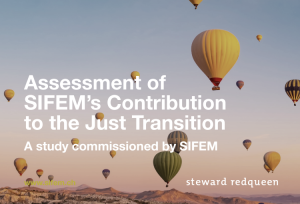A feminist approach to climate action: Why should investors embed gender in their climate strategy?
What if achieving gender equality is a key success factor for effective climate action? In a context where addressing the climate crisis is the priority, what if both concepts – climate & gender – were interconnected? What if gender equality could drive climate action?
There is growing attention on the topic of the gender-climate nexus, with many experts advocating the benefits of a blended approach. Firstly, because women are most affected by the negative effects of climate change, especially in developing countries. Secondly, because more diversity in teams would lead to more effective climate interventions.
How climate change affects gender equality
While G20 countries account for 80% of GHG emissions, it is not in those countries that the environmental crisis causes most of the damage. Global warming affects the lives of the poorest and most vulnerable populations first. On top of that, climate change widens inequalities within countries based on different factors of social exclusion, including gender.
Take the agricultural sector. This is a sector that will be heavily impacted by temperature increases and where in many regions women represent a majority of the workforce. Increased resource scarcity and food insecurity will weight on women’s workload, which is factor of stress and gender-based violence.[1] This is coupled with existing inequalities such as limited access to education or finance.
Investors who are serious about pursuing the double objective of women empowerment and climate action, should therefore strengthen their focus on adaptation financing.
Because the climate crisis makes the gender gap even more challenging to close, climate action needs a gender responsive approach. Yet the inclusion of gender in climate finance projects is often done too superficially. Furthermore, most climate investments are focused on mitigation. While such investments are of enormous importance for the future, the effects of climate change are already being felt.
Investors who are serious about pursuing the double objective of women empowerment and climate action, should therefore strengthen their focus on adaptation financing. For instance, financing insurance for smallholder farmers or climate-smart agriculture technologies. By financing adaptation measures, they are having a direct and positive impact on women’s livelihoods.
How gender equality can accelerate climate action
There is a growing body of evidence showing the role women play in a company’s green transition. And yet, debates and decisions on the topic have mostly been shaped by men.
Gender diversity in the boardroom goes beyond good corporate governance. Research shows a positive correlation between gender diversity in the boardroom and a company’s attention to environmental issues, e.g., a greater integration of environmental issues in a company’s CSR[2] activities or more carbon-related information disclosed[3]. Yet, women remain under-represented in executive and board roles.
Applying a gender lens is especially important in sectors having an influence on decarbonization. Because gender diversity unravels new and diverse perspectives, it offers innovative answers to environmental issues faced by organizations. More diversity among the board and senior managers provides a healthy combination of skills and knowledge. This diversity benefits the decision making and sends a positive message to stakeholders.
Applying a gender lens is especially important in sectors having an influence on decarbonization.
And this is just the tip of the iceberg. The positive correlation goes beyond the boardroom and applies to a larger spectrum of roles women take – including women as employees, consumers, or entrepreneurs across different sectors. By applying a Gender Lens Invest ing (GLI) approach, investors can help promote gender diversity in boardrooms and across organizations. A successful gender diversity starts with the organizational culture and is followed by practical measures. It includes facilitating programs on women’s employability and career growth or ensuring conducive working environment for women.
Conclusion
We need the COP26 to be a turning point in positioning gender at the center of climate decisions. We need to be channeling more investments into climate adaptation projects where women are likely to be the direct beneficiaries. On top of that, improving the availability of gender-disaggregated data will also be an important step in that respect, as this will better inform climate interventions. Furthermore, we need to push for more gender diversity among decision-makers and recognize the value of bringing new perspectives on the topic.
While there is no silver bullet and no single strategy that will instantly solve the environmental challenges we face, we believe applying a gender-lens to climate action will accelerate the transition to a more resilient and equal society.
If you are interested in learning more or sharing your insights on the topic, you can reach out to morgane.fleury@stewardredqueen.com
[1] https://www.oecd-ilibrary.org/sites/3d32ca39-en/1/3/2/index.html?itemId=/content/publication/3d32ca39-en&_csp_=c53c4487bc06c0c37d4c3c821248d030&itemIGO=oecd&itemContentType=book#tablegrp-d1e1491
[2] https://journals.sagepub.com/doi/10.1177/0007650310394642
[3] https://www.emerald.com/insight/content/doi/10.1108/SRJ-11-2016-0208/full/html
















